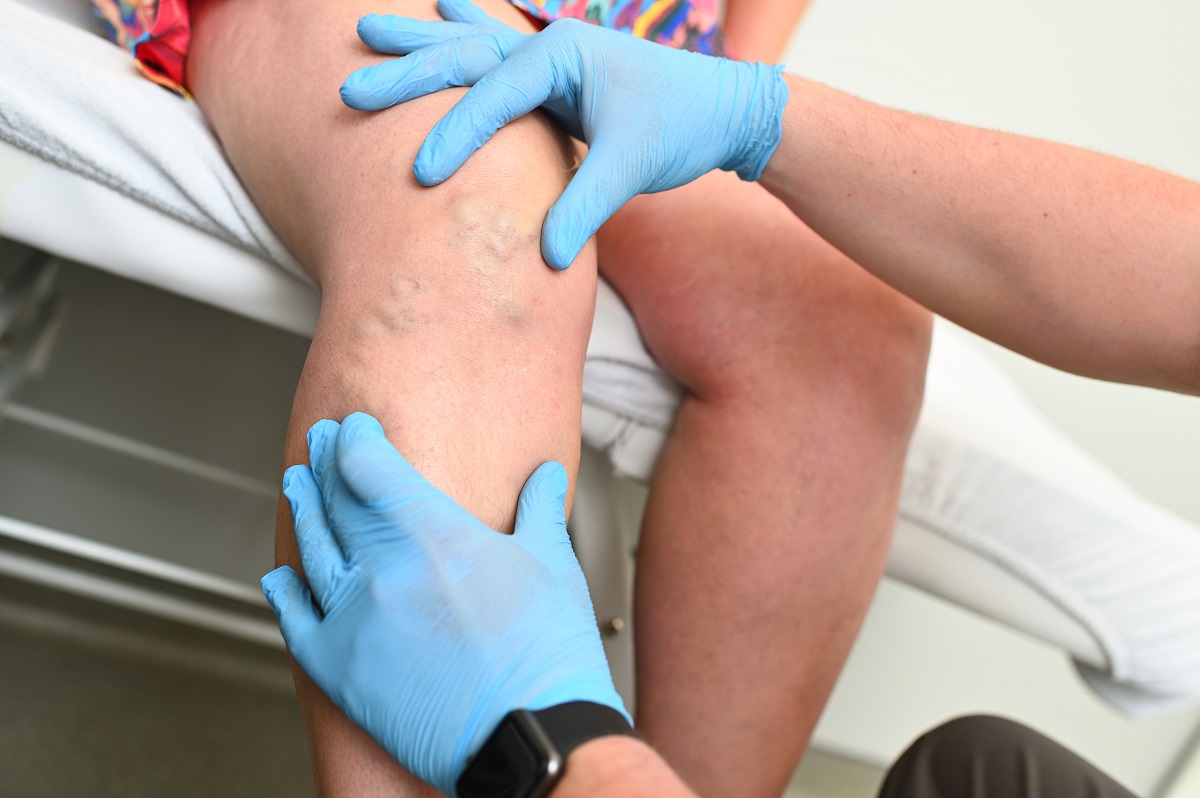A blood clot located in a vein deep within the body (mostly in the leg) is called deep vein thrombosis. Immediate treatment is necessary to prevent serious complications. Compression stockings, surgery, and medicines are usually used in the treatment of this condition. In some cases, medicines are prescribed by the doctors for several months, and wearing of compression stockings for two years.
What is Deep Vein Thrombosis?
Venous thrombosis is also called deep vein thrombosis (DVT) and it happens usually when a blood clot (thrombus) develops in the vein (in most cases in the leg) due to slow blood flow or injuries. Therefore, blood clots can partially or completely block the blood flow through veins. Most DVT cases occur in the lower leg, thigh, or pelvis. However, this health condition may happen in other different parts of the body (including the kidney, liver, brain, arm, intestines, and others).
Generally, deep vein thrombosis is not life-threatening but can become fatal if a blood clot breaks free and travels through your bloodstream. For example, if a blood clot becomes lodged in the lung’s blood vessel, it can cause a pulmonary embolism (PE). As a result, a person who experiences PE requires quick diagnosis and treatment because this condition is life-threatening.
What is The Danger of Deep Vein Thrombosis?
The most common symptoms of a DVT in the leg are swelling and pain, which can last from months to years. The previous symptoms are usually called post-thrombotic syndrome due to damage to the valves and inner lining of the veins. Check below the characteristics of the condition:
- Pooling of the blood
- Elevated pressure inside the veins
- Venous stasis ulcers (also known as leg ulcers)
- Increased discoloration or pigmentation of the skin
Is There a Difference Between Superficial Venous Thrombosis and DVT?
Phlebitis, superficial thrombophlebitis, or superficial venous thrombosis usually happens when blood clots develop in veins close to the skin. In such cases, blood clots rarely travel throughout the body because first, they should move to the deep venous system and after to the whole body. To diagnose a superficial venous thrombosis a physical examination usually is enough while for DVT diagnosis an ultrasound is needed.
How Common is DVT?
Roughly 1 to 3 in 1,000 adults experience DVT or pulmonary embolism in the U.S. However, about 300,000 people die every year because of DVT or PE. Deep vein thrombosis is considered the third most common vascular condition after myocardial infarctions and strokes.
This health condition may occur in people of any age but is more common in those who are over 60 years old. Additionally, more than 50% of DVT cases occur after being in hospital from surgery or a medical condition. It happens because people in hospitals are lying down for long periods instead of moving as normally they would.
Symptoms
In some cases, people may experience mild symptoms, which do not cause concerns or without symptoms at all. Check below some acute DVT symptoms:
- Leg or arm swelling
- Tenderness or pain in the arm or leg
- Swollen area of the leg or arm may be warmer than usual
- Red or discolored skin
- Larger than normal veins near the skin surface
- Flank or abdominal pain
- Severe headaches
- Seizures
In any case, many people do not know they have DVT until the blood clot breaks free and travels to their lungs. The most common PE symptoms are chest pain, shortness of breath, cough with blood, fainting, and lightheadedness. You should immediately contact your doctor if you experience any of the previous symptoms. Early diagnosis and treatment can prevent future complications.
Causes
Check below some health conditions that elevate your risk of DVT:
- Genetic (inherited) condition
- Cancer or chemotherapy
- Medical or family history of deep vein thrombosis
- An injury, surgery, or immobilization that provokes limited blood flow in the deep vein
- Lack of movements for long periods (including sitting on trips in a car, truck, bus, train, or airplane, being immobile after surgery or serious trauma)
- Pregnancy or recent delivery
- People older than 40 years old
- Overweight or obese people
- Autoimmune disease (such as vasculitis, inflammatory bowel disease, lupus, and others)
- Tobacco products
- Varicose veins
- Hormone therapy or birth control pills
- COVID-19
- Central venous catheter or pacemaker
Consult with your doctor for more details.
Diagnosis
Physicians will perform a physical examination and will order you to do some tests (including imaging tests). They also can ask you about symptoms and medical history. Check below some tests that help doctors to confirm DVT:
- Duplex Venous Ultrasound – This is one of the most common tests done for DVT diagnosis. Moreover, it is non-invasive and widely available. This test uses ultrasound waves to check blood flow and blood clots in the veins. However, healthcare professionals may perform another test if the ultrasound outcomes are not clear.
- Venography – An invasive test that involves a special catheter to inject a special dye into the veins. This test helps to determine if blood clots block blood flow partially or completely. While venography is rarely used, in some cases it is necessary.
- Magnetic Resonance Imaging (MRI) or Magnetic Resonance Venography (MRV) – This test shows the organs and structures pictures in the body. MRI mostly offers more clear information than duplex ultrasound or CT scan.
- Computed Tomography (CT) Scan – A X-ray type that helps to look inside your body’s structures. This test is commonly used to find deep vein thrombosis in the abdomen, brain, or pelvis and blood clots in the lung (pulmonary embolism).
Treatment
First time, it may be difficult to go around due to leg pain and swelling. Check below for some tips that can help to return slowly to normal daily activities:
- Regularly exercise calf muscles, especially if you are sitting for long periods.
- Walk for a few minutes every hour.
- Wear knee-high compression stockings (these stockings can decrease swelling and pain by at least 50%).
- It is not recommended to get into activities that could provoke serious injuries or trauma.
- You should also drink plenty of water to prevent dehydration, especially when traveling.
Frequently Asked Questions
What treatments are available for deep vein thrombosis?
- Anticoagulants also known as blood thinners (such as warfarin)
- Compression stockings
- Vena cava (IVC) filter
It is not recommended to start, stop, or change any medicines without a doctor’s recommendation because it may lead to unpleasant results.
How to decrease the risk of DVT complications?
- Follow the treatment exactly as prescribed by your healthcare professional
- Have regular check-ups with your doctor.
- Lifestyle changes (such as quitting smoking, adopting a healthy diet, regular exercise, and others)
When should I go to the emergency room (ER)?
It is advised to go to the ER if the anticoagulant medicines you are using make you bleed too much or provoke any problems (including bright red blood in the stool or vomit). Ask your healthcare provider if you have any other questions.




